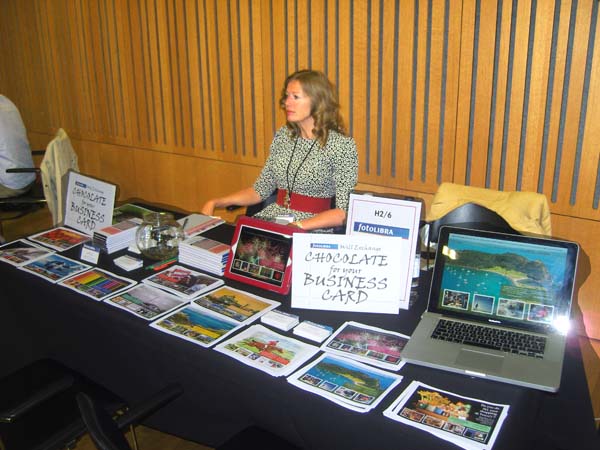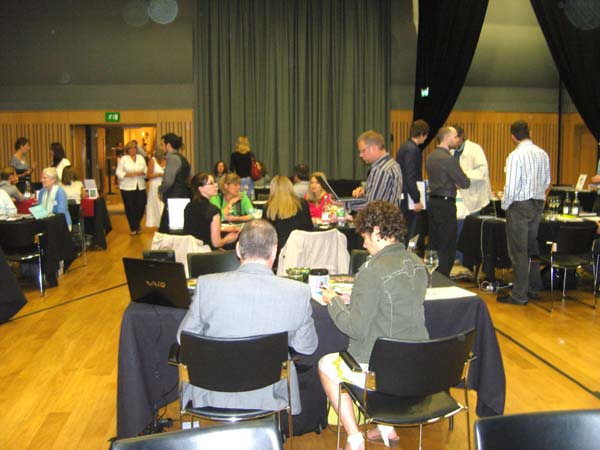Archive for May, 2011
Picture Sales & Website Traffic
May 24th, 2011by Gwyn Headley
Managing Director
Over the past year we’ve been working hard to build our website traffic on the simple belief that more visitors = more sales.
And it seems to be working. In the first three weeks of May we’ve sold images to seven different countries, all to new customers who have bought straight off our site. A very warm welcome to you all!
They’re not just small sales either. One was for over £400 / $635 / €458, and three others were in three figures. This is remarkably good, given the present state of the picture stock market, and as a result some of our photographers will be getting a pleasant surprise in a few days time.
We can’t help feeling this must have something to do with increased traffic to the fotoLibra website. On the Web ranking site Alexa.com, fotoLibra stands as the fourth most visited general picture library in the UK.
If this doesn’t sound great to you, remember there are over 450 picture libraries in Britain.
fotoLibra.com now ranks as the 110,000th most visited website in the world. Laughably low, I know, but just go to Alexa.com and input the URL of any small business you know. Then compare it with the fotoLibra ranking.
Surprising, isn’t it?
If you are a photographer, it makes commercial sense to post your images where more people will see them. And if a photograph is one of 500K, it will have more chance of being seen than if it’s one of twenty-five million.
I forgot to tell you about my last blog, Be Careful With Google Image Search, so here’s a link to it.
And if you wonder why we sometimes seem stressed and spaced-out, read my latest personal blog!
By the way, if you contacted anyone at fotoLibra in the last 10 days and haven’t heard anything back, please contact us again as we’ve been having an intermittent email problem which we hope is now sorted.
Be Careful With Google Image Search
May 13th, 2011Cybercrooks are exploiting security flaws in Google Image Search to try to frighten people into buying evil software.
If you’ve ever seen a flashing banner saying something like “CAUTION — YOUR COMPUTER IS AT RISK” then you are a click away from being led down the path of perdition.
According to the SANS Internet Storm Center (always worth checking when a friend sends you another shouty email telling you yet again that some new bug has been classified by Microsoft as the most destructive virus ever) the villains have “compromised an unknown number of sites with malicious scripts that create Web pages filled with the top search terms from Google Trends.”
Click on an image, and there’s a possibility you’ll be routed to a page offering unverified anti-virus “scareware”, complete with misleading security alerts and warnings.
As far as we can tell, if you simply ignore the ads no harm will ensue. But of course we’re not experts, so we can’t be sure. Keep calm and shut your browser down. You can restart it straight away.
Apparently there are more than 5,000 hacked sites, injected on average with about 1,000 of these bogus pages. This means Google Images is referring about 15 million searches a month to these scam merchants — a mere drop in Google’s ocean, of course, but still a significant number.
There are free plug-ins available which will enable your browser to detect such evildoing. Check out Noscript for Firefox, and a chap called Denis Sinegubko is developing another Firefox plug-in that will flag malicious Google Image search results by placing a red box around images that appear to link to hostile sites, but I don’t think it’s ready yet.
Thanks to Netapplications.com for alerting me to this.
fotoFringe
May 12th, 2011by Gwyn Headley
Managing Director
There was no BAPLA Picture Buyers’ Fair this year. The lovely and redoubtable Flora Smith of Topfoto decided to do something about it.
With the help of Will Carleton of Photo Archive News she created fotoFringe. 55 picture libraries (curiously no Getty, Corbis or Alamy) piled into the plush King’s Place development on a highly gentrified canal basin at King’s Cross and prepared to tout their wares to the picture editors and researchers they hoped would attend.
And attend they did. I can’t speak for other picture libraries, but at the show yesterday we had 58 — count them, 58 — fruitful meetings. (We would have had more had not at least three photographers managed to evade the armed guards and got to chew the fat over a leisurely few hours with us while we agonisingly watched trains of real live picture buyers, weighed down with credit cards and price agreements burning holes in their handbags, steaming past us. There’s a time and a place etc etc and You Know Who You Are. No — we love you really. It’s just that we went there geared up to talk to picture buyers, not sellers.)
I can speak for other picture libraries, actually. There wasn’t a single voice of dissent. Everyone had a great day. It wasn’t expensive (except for all the bars of chocolate we handed out to picture buyers) and in terms of cost per head per meeting it was perhaps the most successful expo fotoLibra has ever attended.
Let’s do it again!
One interesting point (to me) is that 14 of our visitors had come to a trade show without bringing any business cards with them. Is it just me, or does that seem odd?
If you want to see more (and considerably better) images and read more about fotoFringe, here’s a link to Photo Archive News’s report for May 12. You can see fotoLibra’s stand and Yvonne’s and my cheery faces in the fourth image down.
Meanwhile my only quibble was that as we were in the second wave of bookings for the show along with 18 other picture libraries, our black felt-covered fotoLibra trestle table was placed below water level in the windowless basement. It was interesting to note people’s reactions to the space: the under 25s said “This looks like an exam room;” the 25 to 60s said “This looks like a gymnasium;” and the over 60s said “This looks like a morgue.” Ah, the preoccupations of age.
Here’s the stand when we set it up:

and here’s the rest of the room (or The Morgue, as my age group called it).



It really was a cheerful, positive, feelgood sort of event. Let’s hope this leads to more sales for us all.


